The Cougar Helor 240-360 CPU Liquid Cooler Review: A Top Tier Start In CPU Cooling
by E. Fylladitakis on December 9, 2019 3:00 PM EST- Posted in
- Cases/Cooling/PSUs
- Cougar
- AIO
- Liquid Cooling
- Cooler
The Cougar Helor 240/360 AIO Coolers
Aside from the obvious difference of the larger radiator, the Cougar Helor all-in-one (AIO) liquid coolers are practically identical. The core design of the coolers is the typical AIO configuration of a single radiator, two hoses, and a block that combines the CPU contact plate and a miniature liquid pump. Cougar is using high density rubber tubing that should minimize evaporation losses, with external nylon sleeve braiding for additional mechanical protection.
The radiators of the Helor AIO coolers are typical dual pass cross-flow designs, with tiny fins soldered on thin oblong tubes. This is by far the most dominant radiator design for AIO systems and rightfully so, as it offers the best efficiency within limited proportions and for the temperature differences that AIO coolers have to deal with. The hose fixings on the radiator side are immovable, making them a bit less flexible during installation. In an effort to maximize compatibility, Cougar made the radiators slightly less than 29 mm thick. Still, including the stock fans, the AIO system requires a total clearance of at least 55 mm, effectively requiring a case designed with AIO cooling systems in mind.
Cougar focused their design efforts on the main block assembly. With the exception of the contact plate, the rest of the assembly is made of plastic and acrylic. This includes the impeller of the mini pump. The mini pump is secured inside a compartment surrounded by dampening material to reduce its noise output. Users should not confuse the flow indicator visible inside the clear acrylic top with the pump – the pump lies further down inside the assembly. The 90° hose fixings can turn sideways, adding some installation flexibility.
One of the most distinctive features of the Helor coolers is that they are not really sealed AIO systems. A refill port is present on the main block assembly and Cougar includes a bottle of proper coolant in the bundle. A brand-new cooler does not require any topping up but it is good to know that Cougar’s engineers took into account the fact that evaporation could lead to significant coolant losses over the years, a nice gesture for users who like to keep parts for more than just a couple of years. If the original coolant is lost or somehow runs out, proper closed loop system coolant is easy to acquire. Note that under no circumstances water, even if distilled, should be used in such a system without additives.
Turning the main block assembly upside down reveals the octagonal metallic contact plate. It is made of copper but is nickel plated for protection against corrosion. It has been machined to a nearly perfect mirror finish and is held onto the rest of the assembly via eight screws. No thermal compound is pre-applied to it. The contact plate is not large enough for the massive surface of the Ryzen Threadripper processors and that is why Cougar does not supply a TR4 socket kit with the Helor.
Cougar strongly focused on the application of RGB lighting and the result is inspiring. The lighting is strong and yet smooth, perfectly diffused by the fan’s semi-transparent blades and on the acrylic top of the main block. If connected to a compatible motherboard, it will copy the programmed lighting theme of the system. For those who do not own a compatible motherboard or just do not want to have lighting synergy between different parts, Cougar’s controller offers a very broad range of options and the remote controller is very convenient.



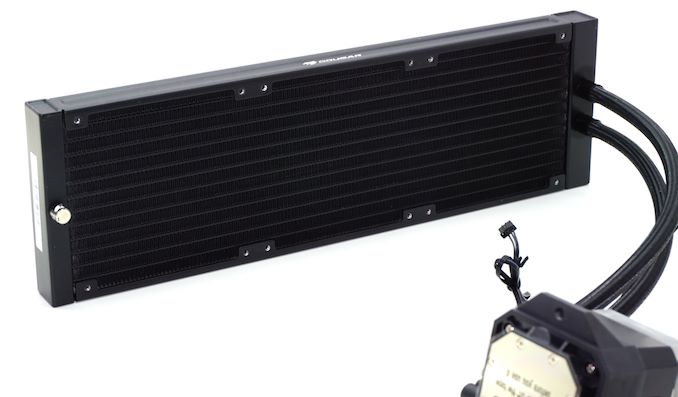
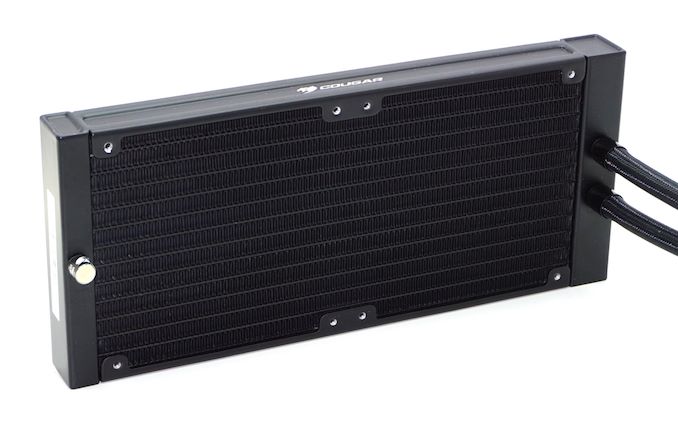
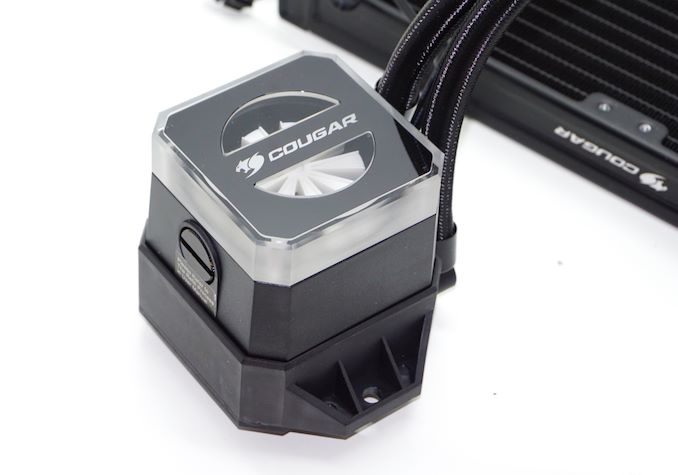
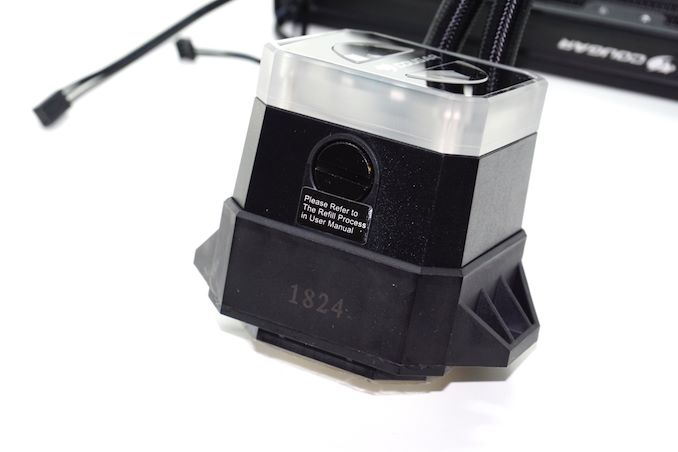
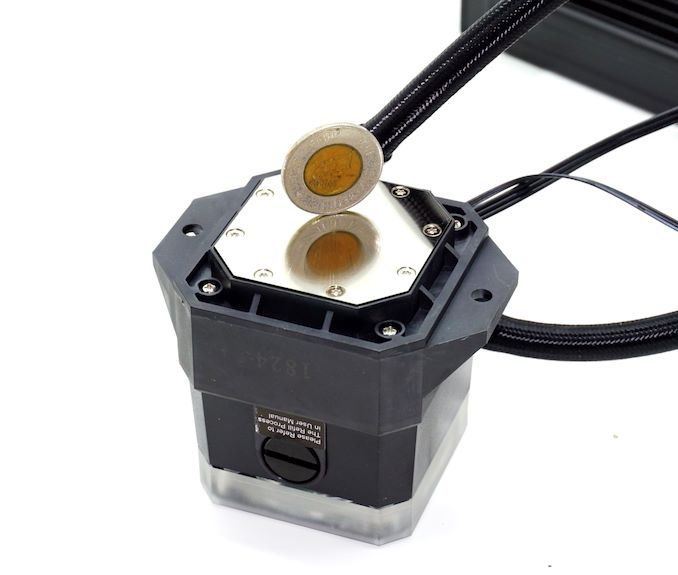
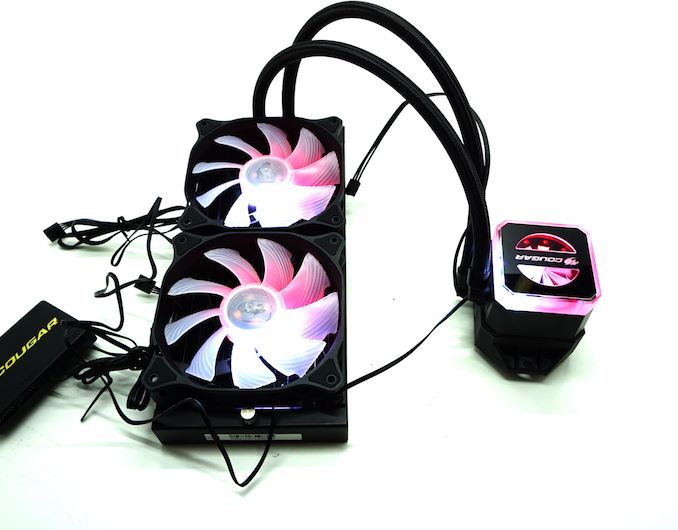









20 Comments
View All Comments
dotes12 - Monday, December 9, 2019 - link
How large is the actual heating element in your thermal cartridge? I'm hoping you're not uniformly heating a square the same size as a typical IHS of a typical Ryzen/Core CPU. The CPU is a much smaller point heat source. This definitely comes into play with AMD using multiple chiplets vs Intel using one large chip on mainstream CPUs, and I think those are important variables you're possibly overlooking.JoeyJoJo123 - Monday, December 9, 2019 - link
That literally doesn't matter. The idea is that they built a heating element that they can generate a fixed amount of heat, and by doing so they remove extra variables from the equation when testing the HSF to see how it fares from lower to higher heat loads. You don't want to be using actual CPUs which may vary from processor to processor how much heat is generated between microcode revisions (AGESA for AMD or microcode security fixes for Intel CPUs), along with variances in software performance due to updates (stress test updates can affect the expected amount of heat a given CPU would generate) or background Windows/OS tasks, etc. These are all variables that might vary from month to month or year to year and can suddenly invalidate past results/tests.Yes, this testing methodology isn't 100% like-for-like in how a CPU + heatspreader's targeted hotspots might perform, but the benefit to doing it this way is that the only variable is the cooler being tested.
dotes12 - Monday, December 9, 2019 - link
...but it does matter in watercooling because the water flow is directed to specific places.This is 100% perfect for testing passive and air cooled metal heatsinks, don't get me wrong. The size of the heat source makes almost no difference in something that has so much thermal mass. Really all I'm trying to say is that waterblock performance and absolute thermal resistance aren't as simple as 1 number. The problem is that the idea behind a CPU waterblock is to direct the most waterflow and put the most surface area over the hottest part of the chip. Historically that's been a small point heat source in the center of the IHS like with Intel so far. EKWB's jet design are great for those for example, but in the last few years we're seeing AMD use chiplets that aren't even centered on the IHS, so what does that mean for the jet design? I expect that the jet design is a poor choice to use on a AMD chip, but that's all EKWB sells for Ryzen. The heat source location and size is much more important in waterblock design and testing than you're giving it credit for, but this is definitely a good start!E.Fyll - Monday, December 9, 2019 - link
The heating element is circular, with a diameter of 5mm, placed at the center of the block.True, this is not an exact representation of every single CPU. However, it is a reliable way to test any given CPU cooler. Pure copper has a massive thermal energy transfer capacity, which is why it is being used for heat spreaders. The heat spreader of a CPU, thin as it may be, distributes energy extremely quickly. Remember that several Threadripper "adapted" coolers were not large enough to cover the CPU's dies, leaving large parts of the heat spreader exposed to open air, and still would work OK (although their performance definitely was anemic - that is just an extreme example).
With that in mind, it should not really matter if the point of heat generation is not exactly at the center of the CPU, as the copper plate above the die and the copper base of a cooler should be capable of coping with the energy transfer. Even if an engineer designs the cooler with the primary heat transfer point being at the center of the block, it should perform roughly the same even if the CPU die is moved a little to either direction. If it is unable to, that is a serious design flaw, one that I cannot believe any competent engineer would make.
dotes12 - Tuesday, December 10, 2019 - link
Thanks for the reply! A circular heating element with a 5mm diameter placed at the center of the block is an awesome reproduction of an Intel CPU. I was worried it was spread out further than that, which wouldn't be an ideal test heater. Everyone is designing blocks for the point heat source being in the middle, so might as well test them that way too hahajmke - Tuesday, December 10, 2019 - link
test setup is good to give you an idea of the cooler capacity.case layout, installation, airflow etc are also very important factors which are not accounted for.
29a - Monday, December 9, 2019 - link
I wish they would test more coolers. I have an LC240e that I got super cheap that I would like to see compared with these.eek2121 - Monday, December 9, 2019 - link
Disappointed at the lack of a TR4 option.tamalero - Thursday, December 19, 2019 - link
seconding.. No idea why the product that needs the AIOs and watercooling options.. are the ones not getting them.Dragonstongue - Monday, December 9, 2019 - link
Beyond the price, Cougar Vortex HDB fans are AWESOMEhave quite a few of them, just a wee bit louder then the veritable Noctua Redux, they while usually +/- similar price point (not as tough plastics that Cougar probably should be using given the price normally charged for them) are well worth it, overall.
had got a Cougar Archon case for my old E8400 EO build that my mom is still using to this day (off and on) while a "budget case" and kind of tight, was overly quite impressed.
i.e if they offer, I will take a long look at simple as that, they have for my $$$ proven themselves a worthwhile contender compared to say Rosewill who (as an example) have proven themselves (likes a few others) so-so in regards to what they charge, what we as consumers expect, and what we end up getting.
Cougar is a very good company (subsidiary of or whatever means little, provided they produce good stuff at a fair value)
(^.^)
as for the below folks...I personally feel that the way AMD is "now" doing with chiplet is a far far better thing than Intel "chasing" so called "monolithic die" which allows AMD to "spread the heat load" over the various chips and powerplane, vs Intel (conversely Nvidia as well IMO) that concentrate the heat in a very small area (which also has the "nasty" of driving power higher than it ought to be as the "chip" has to work that much harder to keep speeds up..inevitably leading to "shortened life span" or requiring that much more / fancier regulation...
I trust AMD "numbers more" for the most part as "historically" they have stayed AT or Below "rated" TDP numbers (so much easier to get proper cooling to handle it) vs Intel of Nv that seem to use a "looser if not impossible" rating on the box, just to make the sale.
yes Intel chips were/generally are "easier" to cool, but having that heatload in a much smaller area, really has only benefited THEMSELVES (i.e, keep price to produce lower, therefore they can keep more in greedy pockets)
I myself would prefer a much larger die to cool vs a stupid small one that goes from cool as cucumber to raging inferno level heat at a moments notice (definite hard on the device, no mater how it is worded, certainly very hard on the motherboard / socket / pcb to also contend with .. certainly the fans trying to expel a mass rush of heat not so easily dissipated, but needs to be rid of ASAP or nasty stuff happens)
Maybe AMD was right "all along" by "gluing dies" together, far easier to make AND cool properly while not being "all that much" pricier (not to mention cost for motherboard much less socket cost) vs Intel "choice" to use LGA (whatever they call it) which has had loads and loads of problems.
anywho, I agree on the test style, test the cooler FIRST, then worry about test individual CPU (or GPU) so that variables are "not something to be concerned with" unless one is wondering how it will cool product X Y or Z
^.^